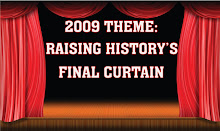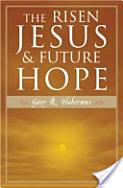The Greeks and Cyclical Thinking
Many historians view the Greeks as the first practitioners of history in an organized sense. The Greek historian Herodotus is frequently referred to as the father of history. This conclusion is due in large part to the fact that other ancient civilizations such as the Egyptians, Sumerians, Assyrians, and Hittites, left artifacts recounting the deeds of great men but showed little appreciation for the effect of one event upon another and the interrelationship between them.(4) It was their view of time as cyclical that accounts for the lack of attention to cause and effect. For the ancients, time and history were rooted in observation - things occurred, went away, and then recurred, much in the fashion of days, nights, and seasons. Consequently, the familiar and predictable patterns of nature became a way of organizing the unfamiliar and unpredictable happenings in the human world.(5)
The consistency of cyclical patterns is quite prominent in Hinduism and Buddhism. The wheel of life represents an endless cycle of birth, life, and death from which one seeks liberation. Native American tribes, such as the Hopi, Inca, Maya, and Aztec civilizations of North and South America who lived in complete isolation from Africa, Europe, and Asia similarly regarded time as cyclical repeating ages that every being of the universe experiences between birth and extinction.(6) In ancient Egypt, the scarab (or dung beetle) was viewed as a sign of the eternal renewal and reemergence of life, a reminder of the life to come.(7) Greek philosophies such as Stoicism and philosophers such as Empedocles and Zeno of Citium taught the cyclical doctrine of eternal return. Norse mythology bears signs of cyclical thinking as evidenced by the symbol of Ouroboros, the snake or dragon eating its own tail, symbolizing a belief in eternal recurrence.(8) (For visual examples of the concepts discussed in this paragraph check out the Examples of Pagan Cyclicality at the top of the right hand margin.)
Despite making significant contributions to the development of historical thought, specifically in pioneering a critical method of distinguishing between truth and error, Herodotus and Thucydides never abandoned the cyclical construct of their peers.(9) Mark T. Gilderhus describes the circular thinking of Thucydides as follows:
Expressing a belief typical of his time, he affirmed a cyclical view in the
expectation that “what happened in the past . . . will in due course, tend to be
repeated with some degree of similarity.” Thucydides intended his writing
to have instructional importance as a guide to action in the future.
Although history never repeated itself exactly, he anticipated the development
of parallel circumstances and believed that the consciousness of history would
bestow many benefits. All leaders should learn from the mistakes of the
past. Indeed, they could master the arts of politics, statecraft, and
warfare only from the study of history.(10)
In the end, Thucydides, more so than Herodotus, sought to explain events in secular terms. Events happened not because the gods willed them but because of active human agents who endured the consequences of their actions. As a result, the notion of causation began to enter into the historical conversation.
The Christian View of History
Writing in the wake of the Gothic sacking of Rome by Alaric in 410 A.D. St. Augustine, the bishop of Hippo in North Africa, wrote The City of God, the most influential statement of the Christian interpretation of history ever devised.(11) Augustine’s view of time was derived from a Hebrew construct that rejected outright Greek notions of cyclical movements.(12) “For Augustine, endless revolving and pointless repetitions would have rendered history meaningless—in effect, a nullification of divine influence and purpose.”(13) In contrast, he viewed history as moving along a line with a clear beginning marked by creation, middle, and end.(14) St. Augustine described why the cyclical view is unacceptable to Christians when he wrote:
Far be it, I say, from us (Christians) to believe this (the Classical philosophy
of history). For once Christ died for sins; and, rising form the dead, He
dieth no more.(15)
Thus, the Christian view of history as linear and directional created a new understanding of mankind’s movement through time. John Warwick Montgomery offers the following analysis in his book, The Shape of the Past: “Here for the first time Western man was presented with a purposive, goal-directed interpretation of history. The Classical doctrine of recurrence had been able to give substantiality to history, but it had not given it any aim or direction.”(16) The linear conception of history is simply another way of saying that all of history is meaningful because it is all directed toward a purposeful end.
Scripture teaches in Genesis 1:1 that time and history had a beginning and are not eternal. The scriptures also teach in Revelation 21-22 that what began in Genesis 1 will to come to an end. The current heavens and earth will be replaced with a new heavens and new earth with Christ as the head of all things when the dispensation of the fullness of Time is ushered in.(17) Thus, linearism is inescapable for the Bible believer, especially a mid-Acts dispensationalist. Herbert Schlossberg, author of Idol for Destruction, offers the following summation of the Christian view of history:
Christianity . . . is by its nature historically minded. It rejects both
cyclical theories of history and notions of the eternality of the
universe. The doctrine of creation and of eschatology are explicit
statements that history has both a beginning and an end and that it is possible
to say something intelligible about both. Events between these two termini
are also intelligible, and, being relation them, have meaning.(18)
While St. Augustine taught much that mid-Acts grace believers would find abhorrent his views regarding the linear nature of history mesh with our dispensational understanding of the scriptures. Right division of the word according to the Pauline pattern outlined in Ephesians 2 establishes a clear linear progression of how God is going to accomplish his eternal two-fold purpose of reconciling the governmental structures of heaven and earth back to himself through Jesus Christ.
William Strauss and Neil Howe authors of The Fourth Turning, correctly observe that linear history has dominated Western historiography. Furthermore, they are correct in their assertion that the Protestant Revolution cemented linearism as the paradigm of choice throughout Western Europe and the United States.(19) However, they err and threaten the clearly observable teachings of scripture when they assert that linearism needs to be overcome in favor of cyclicality. To abandon the linear model in favor of the cyclical is to violate the clear precepts of dispensational Bible study. Consequently, it is the view of this author that cyclicality cannot overcome linearism. Rather, linearism must continue to be embraced as the predominant framework through which to view history, and to the limited extant that cyclicality is true, cyclical concepts can be incorporated into a linear framework to arrive at a workable paradigm.
Endnotes:
1) Mark T. Gilderhus. History and Historians: A Historiographical Introduction. (Upper Saddle River, NJ: Prentice Hall, 2000), 15.
2) Ibid., 51.
3) Ibid., 51.
4) Ibid., 13.
5) Ibid., 13.
6) Time http://en.wikipedia.org/wiki/Time.
7) Eternal Return http://en.wikipedia.org/wiki/Eternal_return.
8) Eternal Return http://en.wikipedia.org/wiki/Eternal_return
9) Gilderhus. History and Historians: A Historiographical Introduction. 15.
10) Ibid., 17.
11) Ibid., 21.
12) Ibid., 22.
13) Ibid., 22.
14) Ibid., 22.
15) Whitney J. Oates. Basic Writing of St. Augustine. (Grand Rapids, MI: Baker Books, 1980), 192.
16) John Warwick Montgomery. Where is History Going. (Minneapolis: Bethany House, 1969), 42.
17) Ephesians 1:10, Colossians 1:16-20.
18) Herbert Schlossberg. Idols for Destruction. (Nashville, TN: Thomas Nelson, 1983), 29.
19) William Strauss and Neil Howe. The Fourth Turning: What the Cycles of History Tell Us About America’s Next Rendezvous with Destiny. (New York: Broadway Books, 1997), 9-15.


























No comments:
Post a Comment